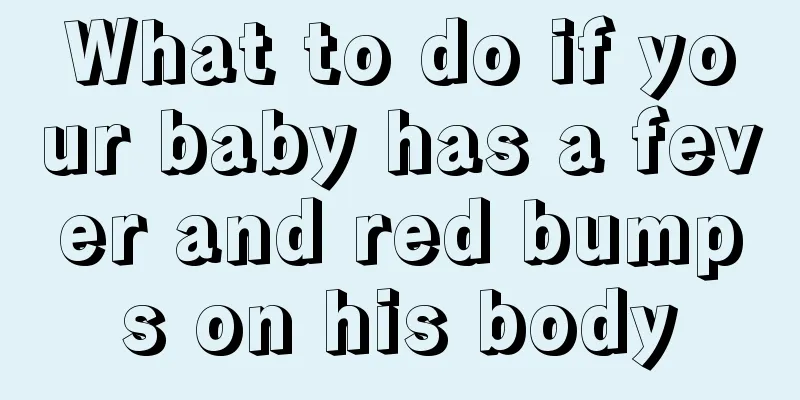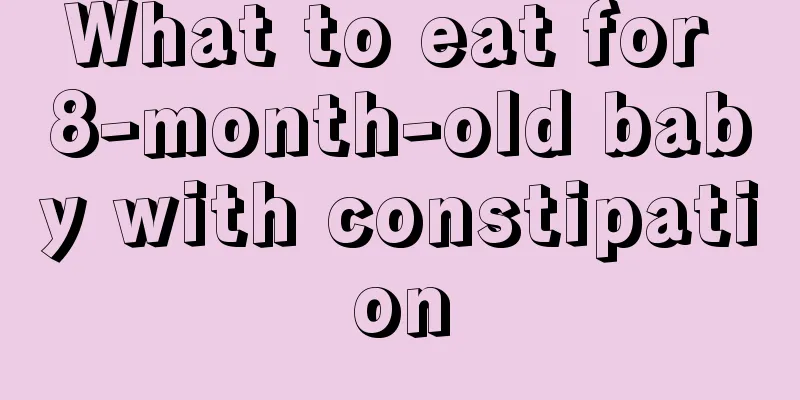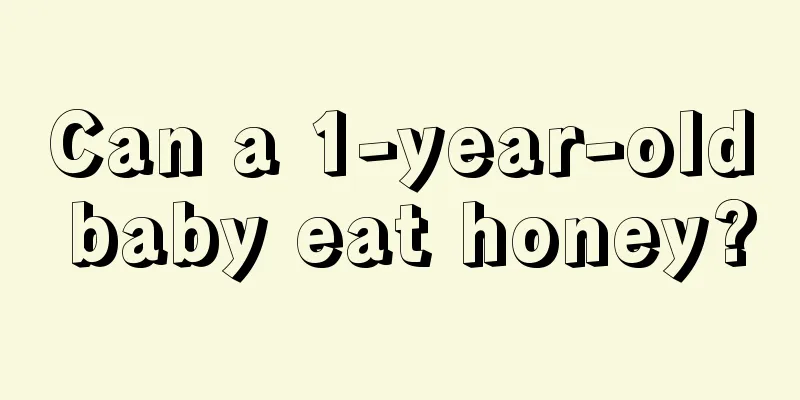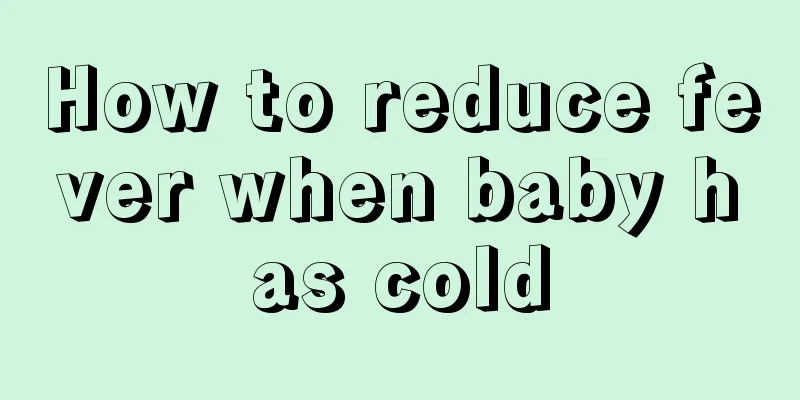What to do if your baby has a fever and red bumps on his body

|
During the growth of children, various problems often arise, which often catch mothers off guard. So today, the editor will tell you what mothers should do when their baby has a fever and red bumps on his body. Let's see if the following treatment methods and causes of the disease can help new mothers, so that they don't often feel overwhelmed by their children's illness. 1. What is a pimple? The traditional Chinese medical name for pimple is small spheres or lumps, which refer to small hard lumps on the skin or muscles, caused by mosquito bites, skin allergies, and other complications. On the other hand, it also refers to the contradictions, doubts, problems, etc. in people's minds. 2. Infant and young child exanthema Roseola infantum is caused by a viral infection. Generally, babies under one year old may be infected and develop the disease. It is a self-limiting disease and can heal itself without medication. Generally, the fever will subside in about 3 days, and then a rash will appear, which will disappear in 2-3 days. Many children also experience cold symptoms or gastrointestinal symptoms. Don't worry, they will recover as the rash subsides. Let your children drink plenty of water and homemade juice to help metabolism and supplement vitamins. Eat light food, preferably liquid or semi-liquid food. Roseola infantum does not require medication, especially antibiotics, which are ineffective against roseola infantum and increase the burden on the child's liver and kidneys. Antiviral drugs also have no significant effect. If a child has a high fever accompanied by drowsiness, difficulty breathing, projectile vomiting, abnormal heart rate, or purpura, he or she should be taken to a large general hospital for treatment immediately. 3. Fever caused by allergies Many diseases can cause fever, which is a defensive reaction when you are sick. When a baby has a fever, the body temperature rises, the body's immunity decreases, and the digestion and absorption functions of the gastrointestinal tract decline, so there will be a contradiction between increased nutrient consumption and weakened digestive function. Whether you take antipyretic drugs or reduce fever naturally, it is achieved in the form of sweating. While sweating to dissipate heat, a large amount of water and salt will be lost. Therefore, the primary issue at this time is not to replenish nutrition but to replenish water. Timely replenishment of lost water can not only help reduce fever, but also facilitate the excretion of metabolites and toxins in the body and shorten the time of recovery. 4. Pay attention to your diet 1. Stay hydrated Water is better than medicine. When you have a fever and sweat a lot, it is necessary to drink warm water frequently to replenish your body. For infants under six months old, continue to breastfeed. Breast milk is easy to digest, can meet nutritional needs, and replenish water. For artificial feeding, you can feed diluted whole milk, that is, 2 parts of milk powder plus 1 part of water (2:1). Although the baby's milk intake is reduced at this time, the water is supplemented, which is more conducive to the baby's digestion and absorption. It is advisable for young children to drink boiled water when they have a fever. They can be fed some boiled water appropriately to supplement the body's vitamin C and enhance disease resistance. Drink enough water to keep your lips moisturized, but don't drink too much. 2. Liquid diet For young children with fever, the diet should mainly consist of liquid food, such as milk, lotus root powder, milk (with less oil), etc. You can also drink some mung bean soup or ice watermelon to help cool down, promote diuresis and fight disease. However, for infants (less than 6 months old) with diarrhea, who have poor resistance, weak gastric motility, and poor tolerance of gastric mucosa, cold drinks are not conducive to physical recovery and should be avoided. When the child's body temperature drops and his appetite improves, he can be fed semi-liquid food, such as minced meat porridge, noodles, rice porridge, egg drop porridge, and some easily digestible fish (fish). The diet should be light and easily digestible, with less oil and salt, and small meals. Spicy and irritating foods should be avoided. But there is no need to avoid certain foods to prevent malnutrition and decreased resistance. 3. Take sugar and salt water If a young child has fever and diarrhea, the medicine can be taken multiple times. Take sugar and salt water. The preparation ratio is 500 ml of water, one teaspoon of sugar and half a bottle cap of salt. 500 ml can be taken within 4 hours. At the same time, you can supplement with electrolyte foods such as citrus, bananas and other fruits (high in potassium and sodium), milk and soy milk (containing calcium), rice soup, and pasta (containing zinc). For those with more severe symptoms, they should temporarily fast and receive intravenous drips to replenish water and electrolytes. After the diarrhea and vomiting are relieved, you can eat liquid food, such as rice soup, filtered vegetable juice, lotus root powder, etc., but you should avoid milk and soy milk (which can easily produce gas). The above is all about the red bumps on the baby's body when he has a fever. There are many reasons for this phenomenon. In addition to being related to infant emergency, there are many diseases that can cause fever and red bumps. So when the child has this condition, the mother should immediately take the child to the hospital for a detailed examination and receive treatment under the guidance and advice of the doctor. Don't be blindly careless and delay the child's condition. |
<<: Nine-month-old baby recipes and steps
>>: What is the cause of the red pimples on the baby's arms?
Recommend
Introduction to breastfeeding for newborns
We all know that the birth of a baby means that i...
There are red bumps on the base of the child's tongue
The tongue has a wide range of functions. First o...
What are the methods to relieve cough and reduce phlegm in children?
Children often cough, and in many cases, their co...
What is the cause of the baby pouring milk?
Baby milk regurgitation happens to almost every b...
Baby torticollis corrector
Special attention should be paid to the baby'...
How to correct children's pigeon feet?
In our daily life, we often encounter people with...
Reasons why baby's palms and soles are wet
Modern children are the treasures of their parent...
What are the methods to relieve infant cough?
When a baby has a problem with his body, you cann...
How to treat children’s poor digestion?
Many people suffer from indigestion, stomach pain...
Subependymal cyst in the newborn
Some newborn babies may suffer from subependymal ...
Summer common diseases are easy to invade children and parents need to be vigilant at all times
Every summer is a period of high incidence of man...
How long is it appropriate to wean your baby?
How long is the appropriate time to wean the baby...
What should we do if a girl from a poor family has character defects?
In general, people's material conditions are ...
Why does the newborn baby always hum when sleeping at night?
With the coming of more and more babies into the ...
Preventive measures for baby's mouth ulcers
Nowadays, many babies have ulcers at the corners ...









